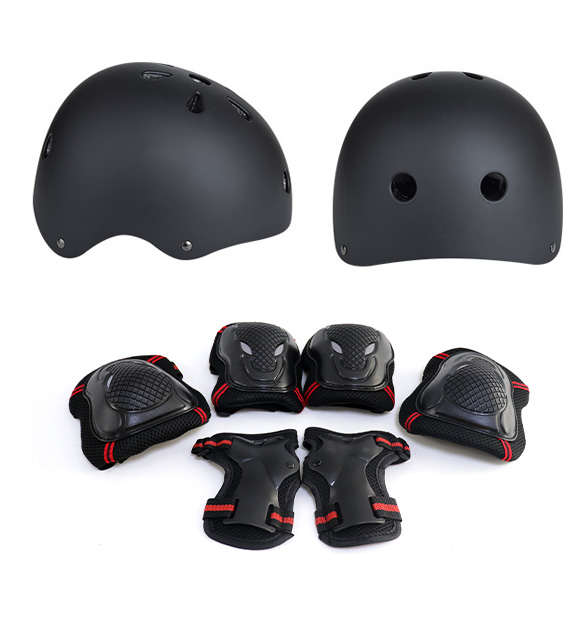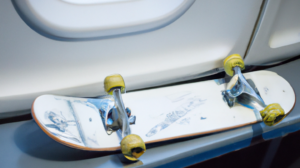Surf skateboarding is a thrilling sport that combines the exhilaration of surfing with skateboarding skills. It allows riders to replicate the feeling of riding waves on land, giving them the freedom to carve smooth turns and perform stylish maneuvers. However, surf skateboarding has safety considerations and gear requirements, like any sport. This blog post will explore the critical safety considerations and gear you should be aware of when using a surf skateboard.


The Importance of Safety in Surf Skateboarding
Safety should always be a top priority when engaging in any sports activity, and surf skateboarding is no exception. Like traditional skateboarding, risks include falls, collisions with objects or pedestrians, and injuries. As a result, precautions and using the right equipment are essential for a safe and enjoyable experience.
Safety Gear for Surf Skateboarding
1. Helmet
A helmet is one of the most essential safety equipment for every skateboarder. It protects your head from potential impacts and can prevent serious head injuries. When selecting a helmet, ensure it meets safety standards and fits snugly on your head. Look for certifications such as ASTM or CPSC to guarantee its quality. Remember, wearing a helmet is not only for beginners but should be a habit for all surf skateboarders.
2. Knee and Elbow Pads
To protect your joints from scrapes and bruises, knee and elbow pads are crucial. They provide cushioning and absorb impacts when you fall or collide with hard surfaces. Look for places that offer a balance between flexibility and protection. Ensure they fit securely and cover the vulnerable areas around your knees and elbows.
3. Wrist Guards
Wrist guards are essential for preventing wrist injuries, such as sprains or fractures, which are common in skateboarding. They support and stabilize your wrists, reducing the risk of damage during falls or sudden stops. Look for wrist guards that are lightweight, breathable, and offer a good range of motion to ensure optimal comfort and protection.
4. Proper Footwear
Choosing the right shoes is vital for maintaining stability and control while surf skateboarding. Opt for skate shoes that have a grippy rubber sole, as they provide excellent traction and help prevent accidents caused by slipping. Additionally, skate shoes offer extra protection for your feet and ankles, reducing the risk of sprains or twists.
5. Protective Clothing
Wearing appropriate clothing is often an overlooked aspect of skateboarding, but it has a vital role in protecting your body. Do not wear loose clothing which catches on the wheels or restricts your freedom of movement. Instead, opt for comfortable and durable apparel that allows for a full range of motion. Consider wearing long sleeves and trousers to protect against scrapes and abrasions.
Safety Considerations for Surf Skateboarding
In addition to wearing the proper safety gear, there are several other safety considerations to remember when surf skateboarding. These considerations will help minimize risks and ensure a safer experience overall.
1. Know Your Limits
Understanding your skill level and limits is crucial when engaging in any action sport. Pushing yourself too far beyond your abilities can lead to accidents and injuries. Start with basic maneuvers and progress gradually as you become more comfortable and confident. Remember, safety should always take precedence over trying to impress others or taking unnecessary risks.
2. Choose Appropriate Terrain
Selecting a suitable terrain is essential for surf skateboarding. Look for smooth and even surfaces that are free from debris, cracks, or loose gravel. Avoid crowded areas with pedestrians or heavy traffic. It’s also wise to steer clear of wet or slippery surfaces as they can significantly increase the risk of falls.
3. Be Aware of Your Surroundings
Always be vigilant and aware of your surroundings while surf skateboarding. Watch for obstacles, such as rocks, curbs, or potholes, that may impede your ride. Stay alert to pedestrians, cyclists, or other skateboarders who may enter your path. Knowing your surroundings will help you anticipate potential hazards and react accordingly.
4. Practice Falling Safely
Falling is inevitable in any action sport, including surf skateboarding. Learning how to fall safely can significantly reduce the risk of injury. Practice falls under controlled conditions, such as a skate park, to develop techniques like rolling or absorbing impact with your muscles. Remember to protect your vulnerable areas, such as your head and wrists, during a fall.
5. Maintain Your Equipment
Regularly inspect and maintain your surf skateboard to ensure its safety and performance. Check the wheels, trucks, and bearings for any signs of damage or wear. Tighten loose bolts and nuts, replace worn-out grip tape, and clean your skateboard. Proper maintenance will prevent accidents caused by equipment failure and prolong the lifespan of your board.
Conclusion
Surf skateboarding is an exhilarating sport that gives riders the sensation of riding waves on land. However, it’s crucial to prioritize safety and be equipped with the right gear to prevent injuries. Always wear a helmet, knee and elbow pads, wrist guards, and skate shoes. Choose appropriate terrain, know your surroundings, and practice safely falling. By following these safety considerations and gear recommendations, you can enjoy a safe and rewarding surf skateboarding experience. Stay safe, have fun, and ride with caution!
Note: Protective gear and adherence to safety guidelines cannot guarantee complete safety. Engaging in any sport involves inherent risks, and individuals should always assume responsibility for their own safety.







